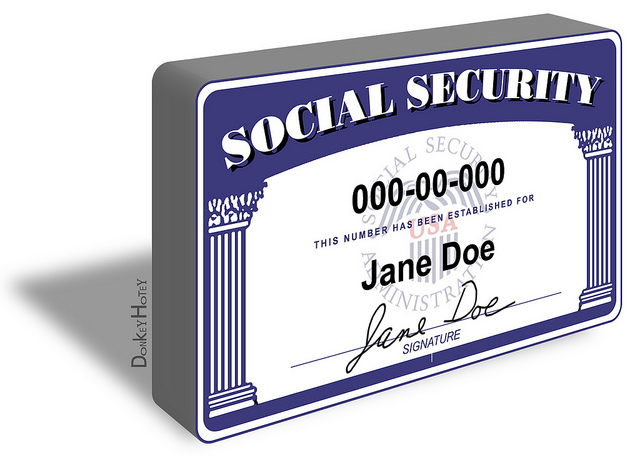
The federal government is failing to verify enrollment and eligibility information for individuals enrolled on Obamacare exchanges or on Obamacare’s Medicaid expansion, according to two reports by the Government Accountability Office (GAO). Individuals who did not meet the eligibility requirements were still being approved, resulting in billions of dollars in payments by the government to fraudulent individuals.
GAO performed undercover testing and created fictitious accounts for 2015 and 2016 to check if applicants were being properly verified. GAO tested enrollment verification on both the federal and state exchanges. In both cases, GAO found insufficient verification of its fictitious applicants and determined that the marketplaces still remain vulnerable to fraud.
With its passage, Obamacare created two new government programs: exchanges for private insurance and the expansion of Medicaid. In order for enrollees to be eligible for subsidies or Obamacare’s Medicaid expansion, applicants must meet basic eligibility requirements. To be eligible, an applicant must provide their Social Security number, proof of citizenship, household income, and family size. This information is then verified by an electronic verification system or approved by HHS.
Obamacare exchanges unable to screen fictitious applicants
In 2015, GAO created ten fictitious accounts that did not meet the eligibility requirements and therefore, should not have been approved. In four of these accounts, the GAO used Social Security numbers that had never even been issued. The other applications were duplicately enrolled or received coverage by claiming that their employer-provided care did not meet the minimum coverage requirements. As the 2015 report notes, all ten applications were approved even though fraudulent or insufficient documentation was provided:
“Although 8 of these 10 fictitious applications failed the initial online identity-checking process, all 10 were subsequently approved.”
Similarly, in 2016 GAO used fictitious applicants to check for basic identity and citizenship verifications, and found that all eight applications were approved even though the applicant’s identity was fraudulent. As the 2016 report notes:
“For eight applications, GAO used new fictitious identities to test verifications related to identity or citizenship/immigration status and, in each case, successfully obtained subsidized coverage.”
Obama’s Medicaid expansion fails to screen fraudulent applicants
GAO also tested whether Obamacare’s Medicaid expansion properly screened individuals that provided insufficient or fraudulent documentation. For each application, GAO provided identity information that did not match the records of the Social Security Administration. For two of these applications, the GAO was asked to submit supporting documents. Despite this documentation being fraudulent both applicants were approved. As the report notes:
“For eight additional fictitious applications, initially made for Medicaid coverage, GAO was approved for subsidized health-care coverage in seven of the eight cases through the federal Marketplace and the two selected state marketplaces.”
These latest findings should not be surprising. Watchdog groups have raised concerns that the federal government is not properly verifying enrollment eligibility for Obamacare on numerous occasions. Since the start of 2015, government watchdog groups have released warnings at least ten other times:
- A February 2016 report found that the federal government has failed to properly monitor enrollee eligibility for Obamacare, according to a report by GAO. As a result, the government has made billions of dollars in Obamacare subsidy payments to individuals that may have been committing fraud.
- ‘An auditor’s report examining Minnesota’s Obamacare exchange found the exchange enrolled more than 100,000 individuals who were ineligible for the program. In all, the audit estimated an error rate of close to 50 percent, and the state overpaid up to $271 million over the five-month period that was analyzed by auditors.
- A December 2015 report by the Health and Human Services Inspector General (HHS OIG) found that CMS relied entirely on data from health insurers to verify whether enrollees had paid their premiums and were eligible. However, this data was completely insufficient – insurers provided payment information on an aggregate rather than enrollee-by-enrollee basis, making verification all but impossible.
- A October 23, 2015 report by GAO found that Obamacare exchanges (both state and federal) were failing to verify key enrollment information of applicants including Social Security numbers, household income, and citizenship.
- A September 1, 2015 report by the Treasury Inspector General for Tax Administration (TIGTA) found that Obamacare exchanges are failing to provide adequate enrollment information to the IRS for proper payment and verification of tax credits.
- A August 2015 report by HHS OIG found that the federal exchange is failing to verify Social Security numbers, citizenship, and household income of Obamacare applicants. As a result, the exchange is unable to verify whether applicants are properly receiving tax credits.
- A July 16, 2015 audit by GAO found that 11 of 12 fake ‘test’ applicants received coverage for the entire 2014 coverage period despite many using fraudulent documents, and others providing no documentation at all. From these 11 applicants alone, Healthcare.gov paid $30,000 in tax credits.
- A June 16, 2015 report released by the HHS OIG found that $2.8 billion worth of Obamacare subsidies and payments had been made in 2014 without verification.
- A June 10, 2015 TIGTA report found the IRS failed to properly administer nearly $11 billion in Obamacare tax credits.
- A May 21, 2015 report by TIGTA found that the IRS failed to test Obamacare processing and verification IT until a week before the filing season began.
